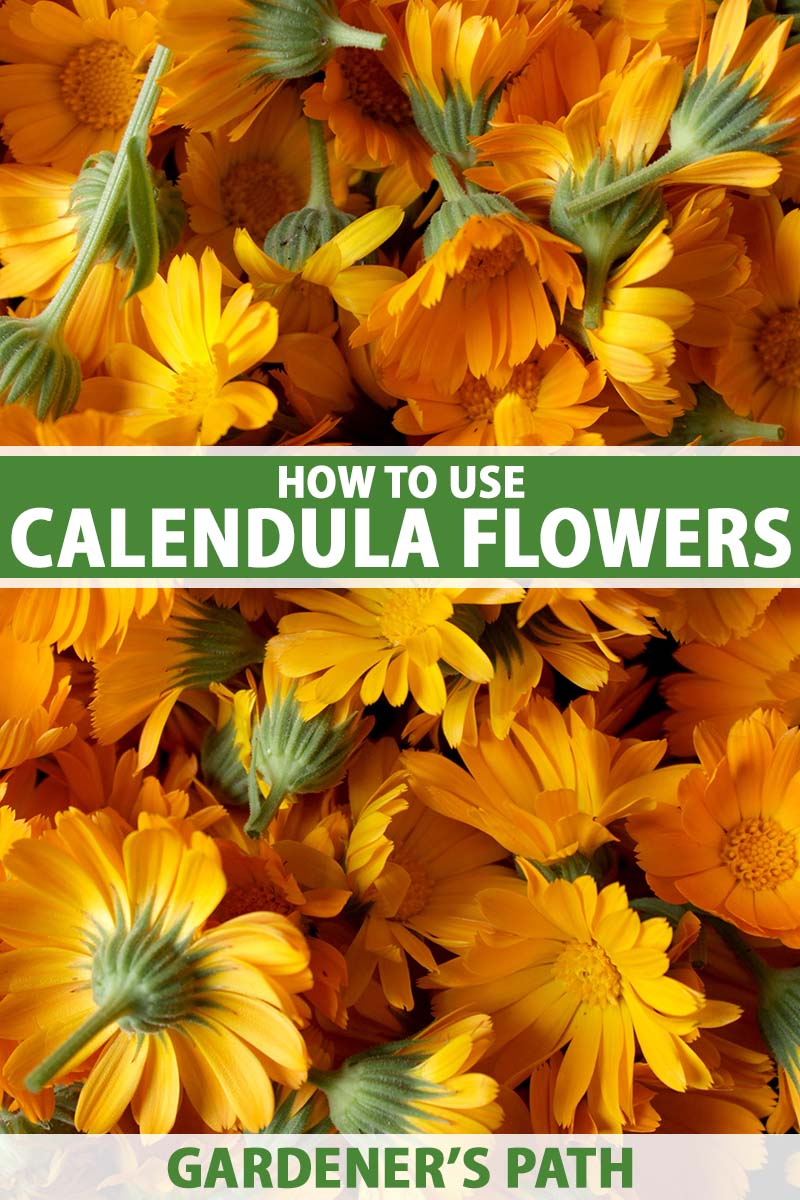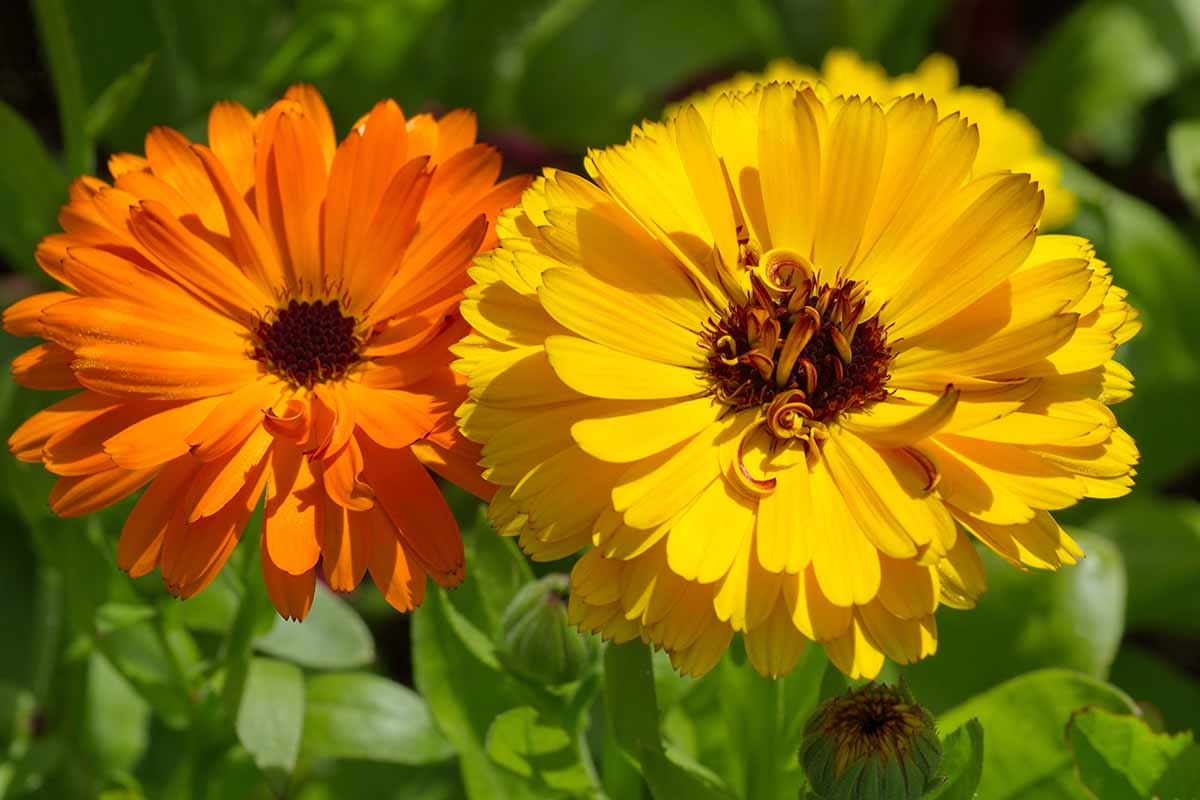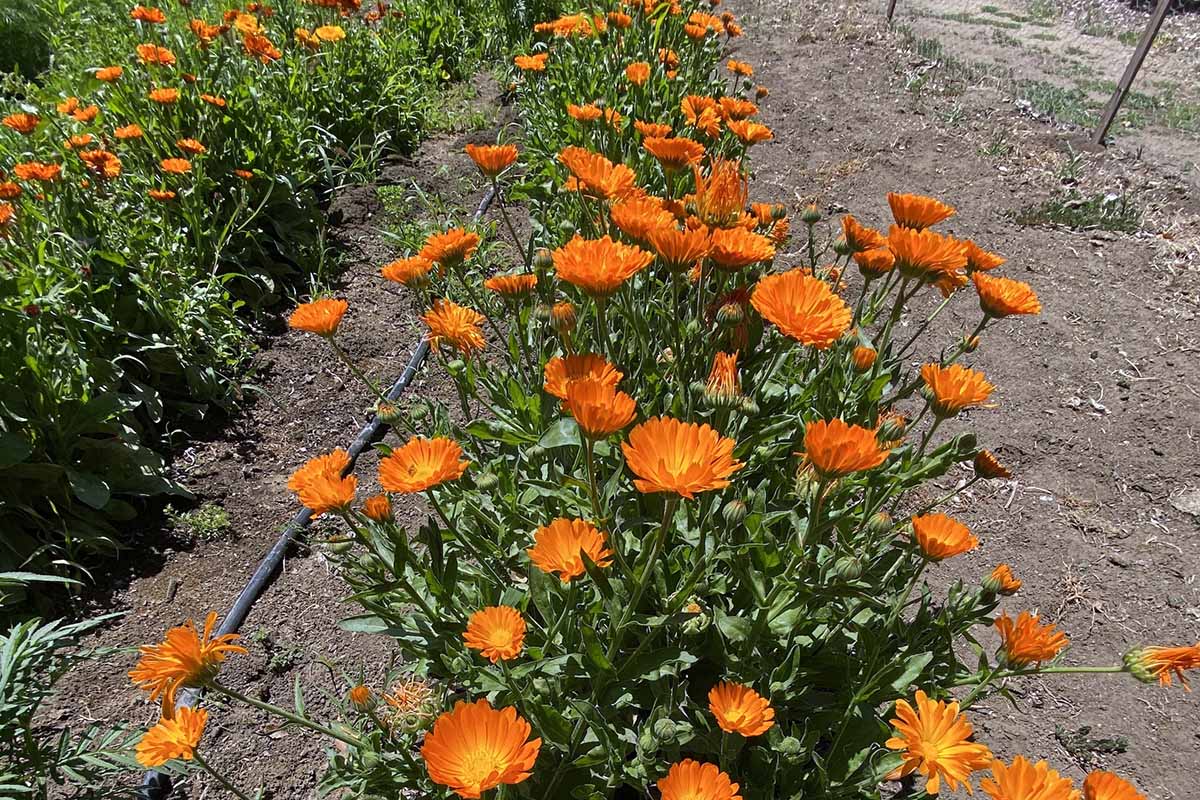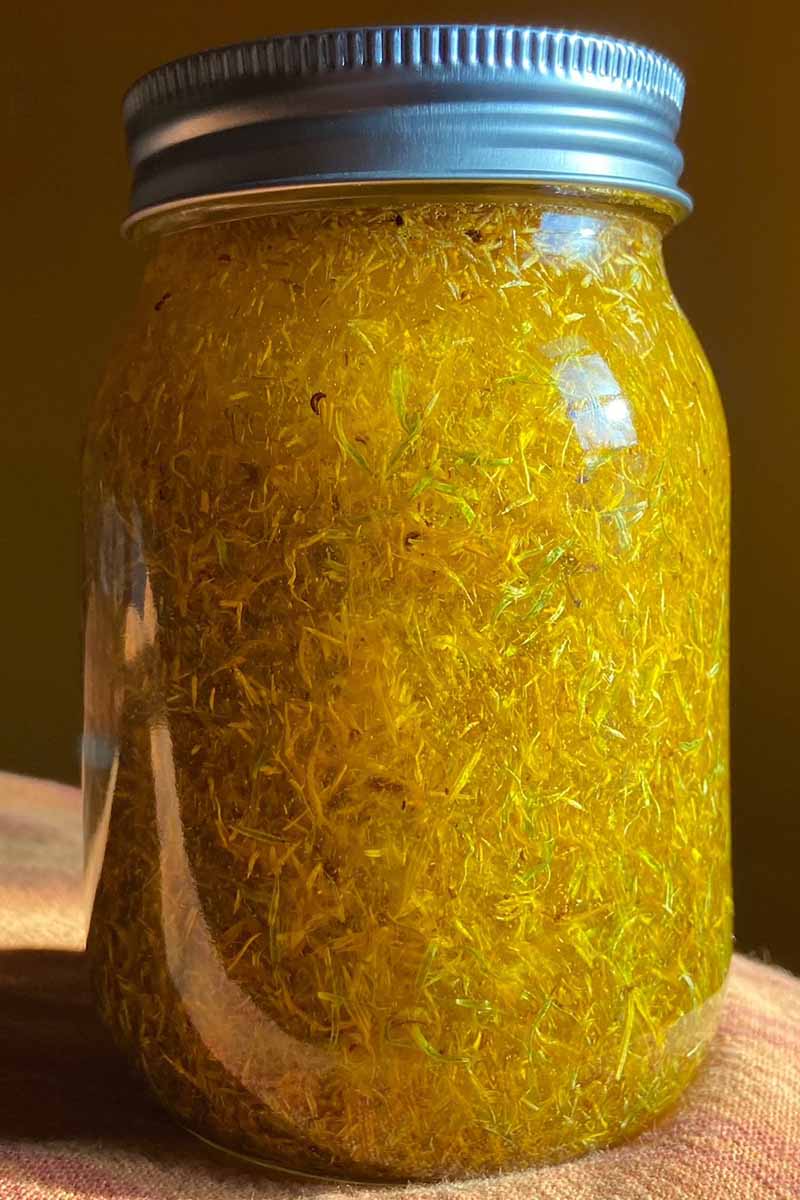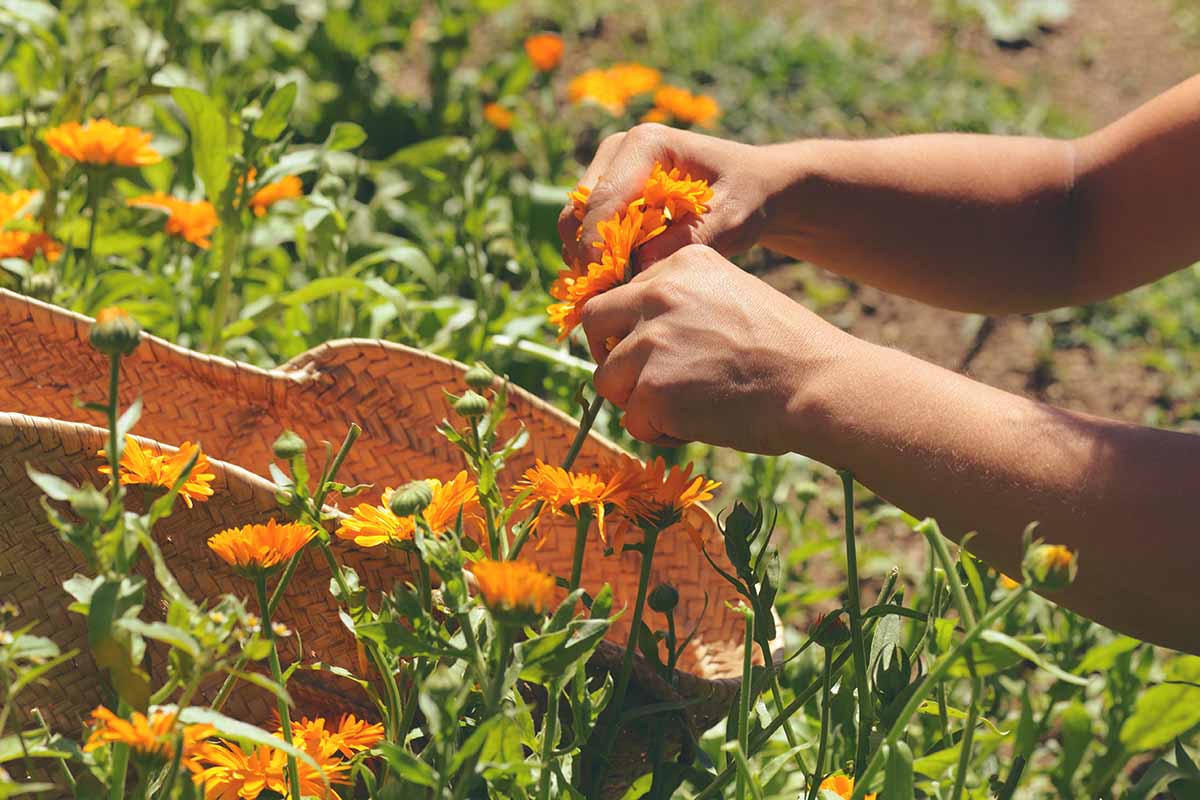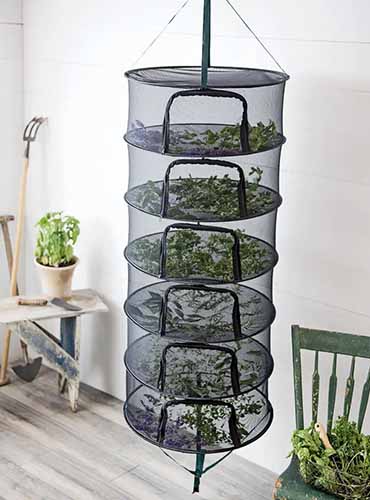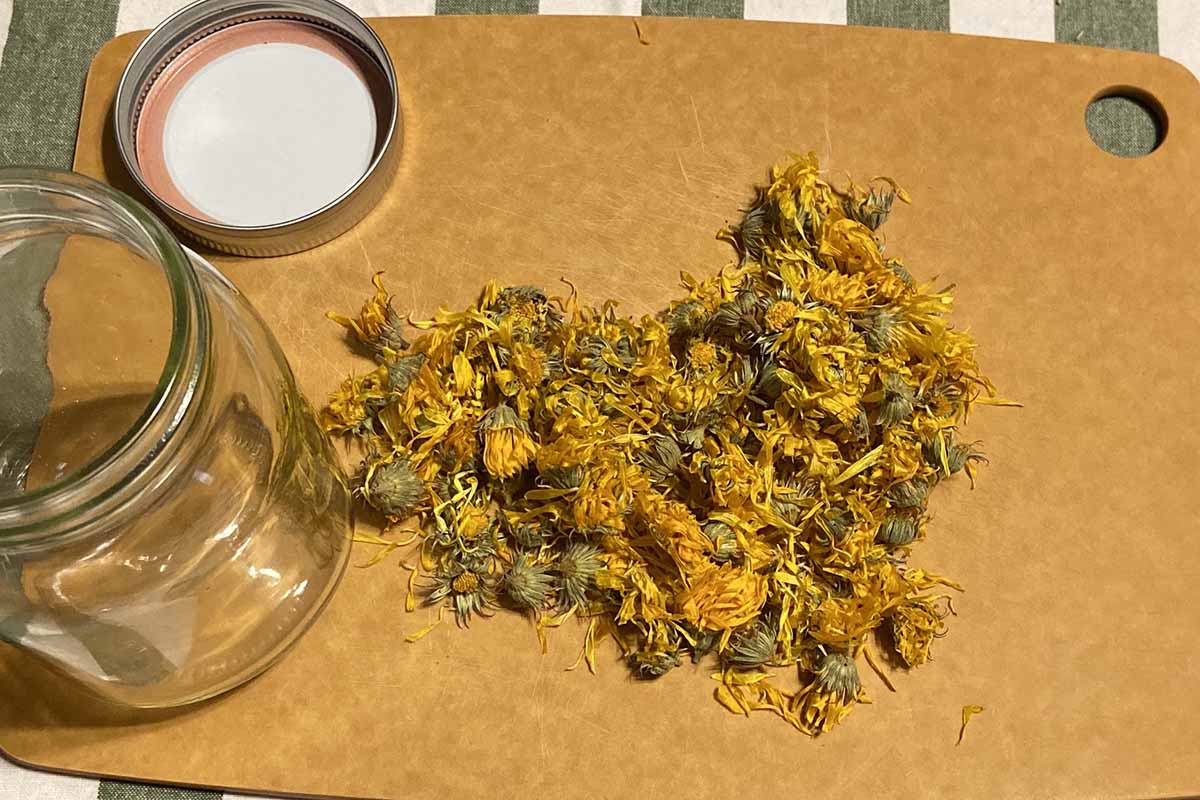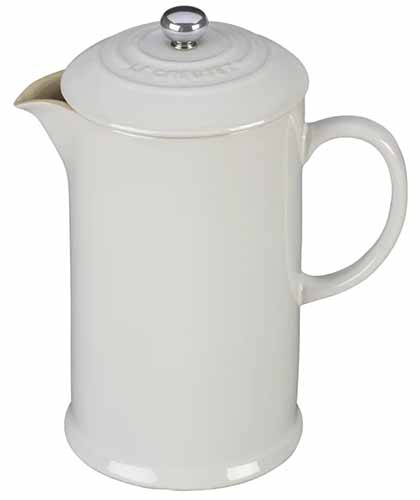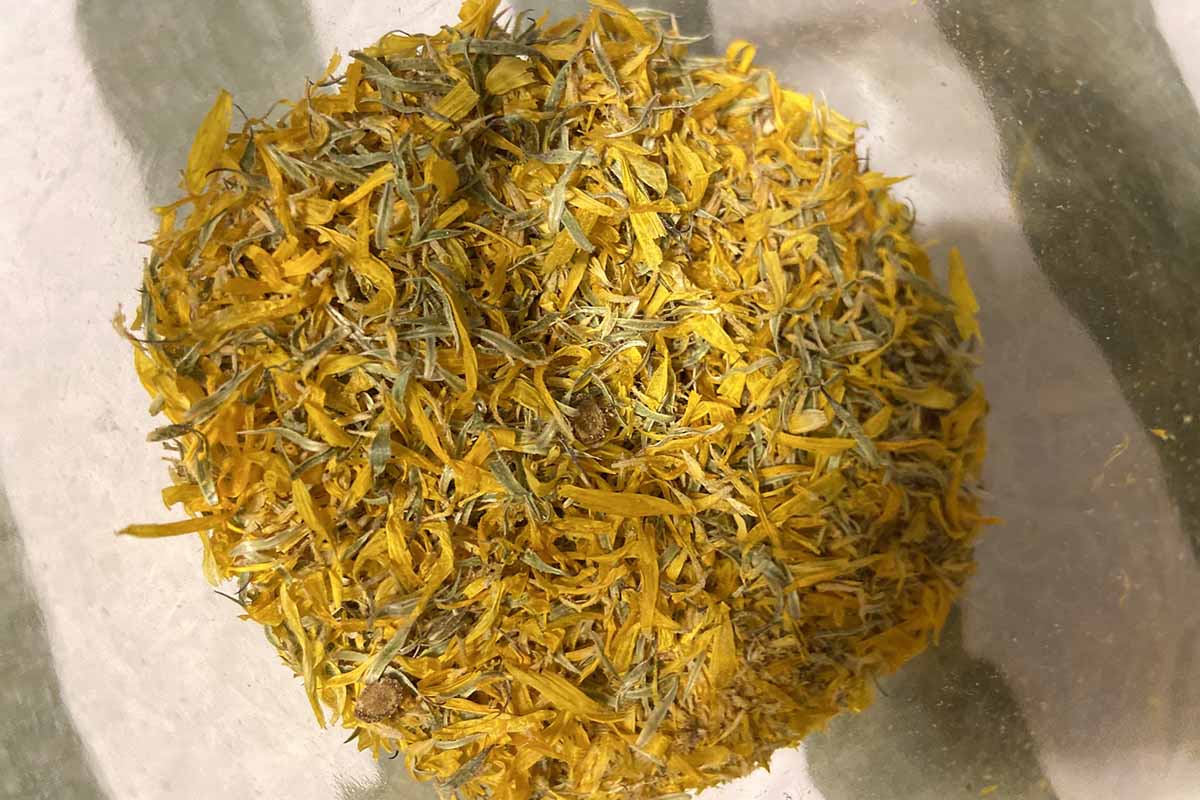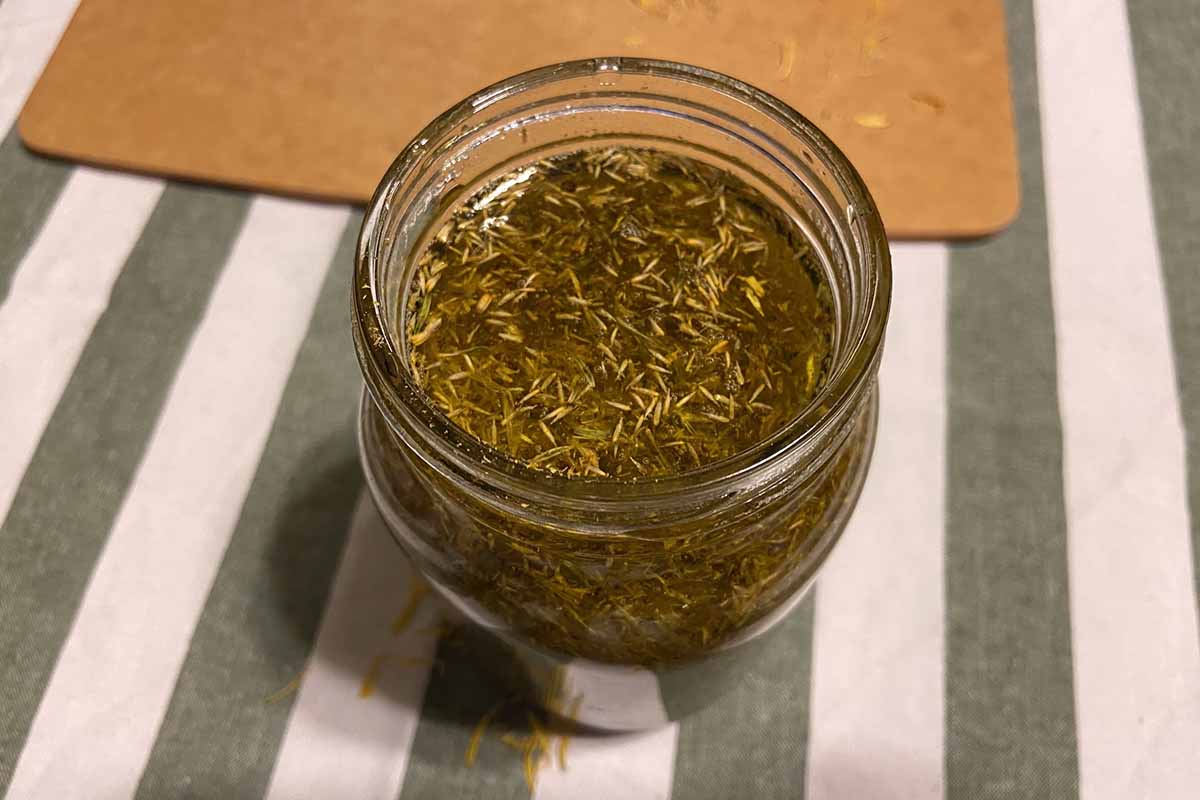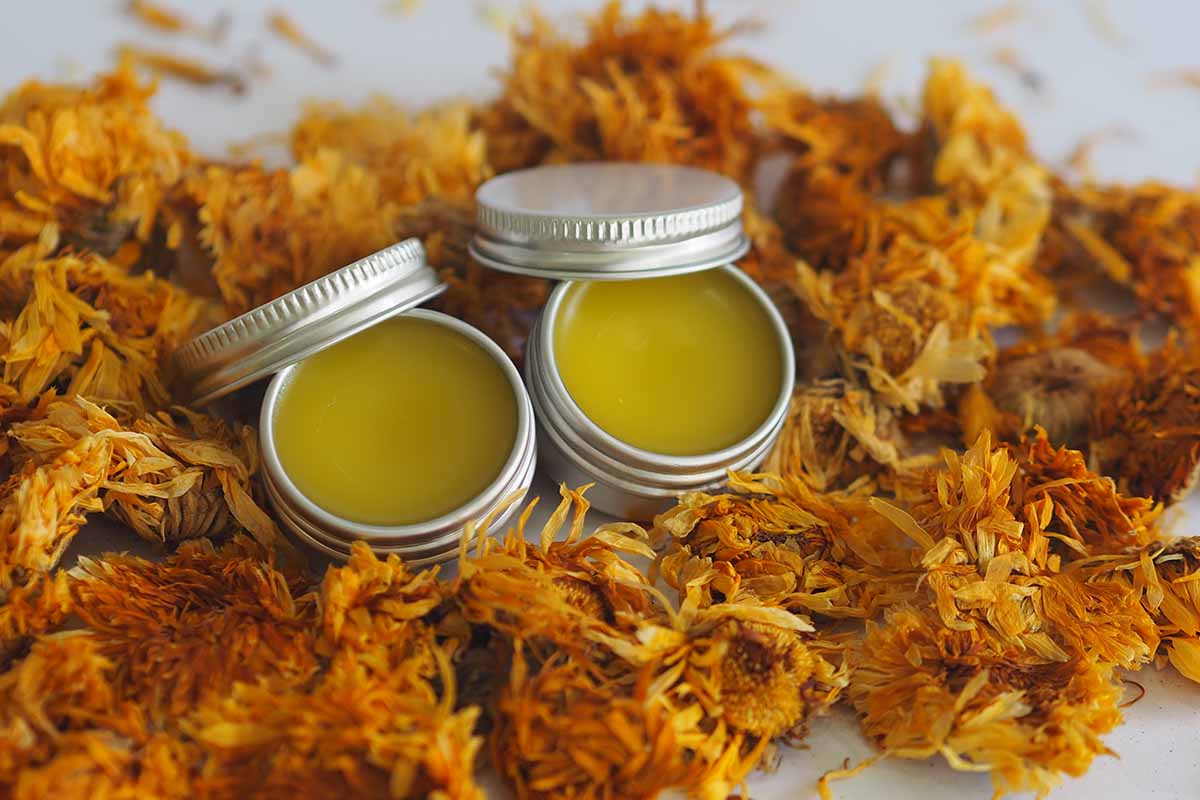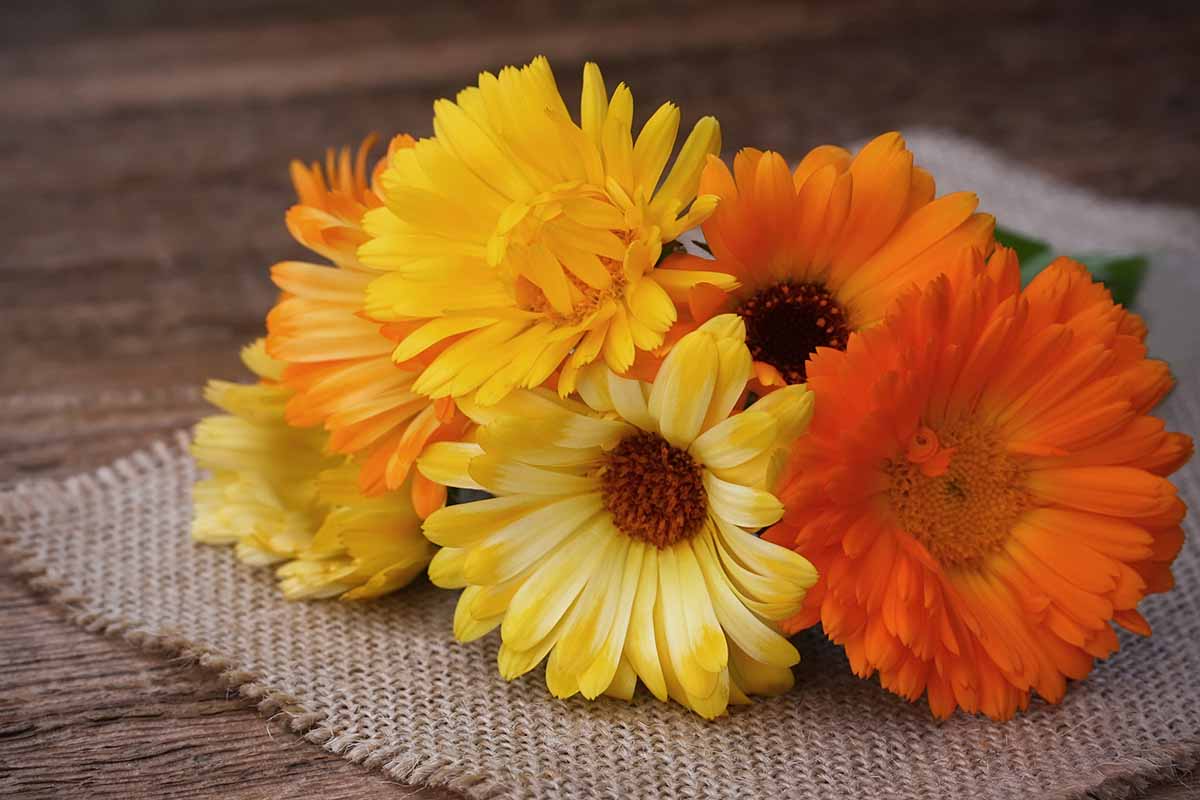Cultivating medicinal plants is a great way to connect with nature, offering a regenerative approach to the practice of herbalism. We link to vendors to help you find relevant products. If you buy from one of our links, we may earn a commission. This cheerful aromatic herb is a vigorous grower that provides plentiful flower harvests from spring into fall. The great thing about calendula is that the more you pinch off the flowers, the more they will produce, blooming continuously until season’s end! Thanks to the abundant blossoms and their myriad benefits, we can get creative with our herbal and culinary preparations. This guide will go over some of my favorite ways to use calendula flowers and some herbal remedy preparation tips. Ready to be inspired by this coveted herb? Continue reading! Here’s what we’ll cover:
What Are Calendula Flowers?
Calendula is an annual flowering herb in the Asteraceae family that grows in Zones 3 to 11. It is native to southwestern Asia, western Europe, Macaronesia, and the Mediterranean. Commonly referred to as “pot marigold” even though the plant is not a true marigold, this herb is excellent for those new to herbal gardening because calendula is easy to grow and generous in its flower production. The entire flower head may be used in herbalism since the resinous green bases are filled with medicinal oils. Botanically speaking, the sticky bases of the flowers are called involucres. The flowers come in charming orange, yellow, and sometimes peach shades. Testing the stickiness of their involucres is an easy way to measure the quality of your calendula cultivar’s medicinal properties. If they make your fingers stick, they are worthy candidates for herbal crafting! The petals, which are technically ray florets, are included in a variety of culinary recipes.
Medicinal Use
Calendula is celebrated for its internal and external healing benefits. These plants are a staple in many an herbalist’s garden for a number of reasons. The primary healing actions of calendula are anti-inflammatory, antispasmodic, lymphatic, astringent, vulnerary (wound healing), emmenagogic (stimulates blood flow in the pelvic area and uterus), cholagogic (induces flow of bile), and antifungal. The constituents responsible for calendula’s medicinal benefits are triterpenes, flavonoids, volatile oils, and chlorogenic acid. Let’s make some sense out of those primary actions and cover the indications in which calendula would be a beneficial plant ally to select for medicinal use. The anti-inflammatory, antispasmodic, lymphatic, astringent, vulnerary, and antifungal properties make this flower a fantastic remedy for external use. When the skin has become damaged due to injury or infection, calendula can be safely applied in various ways. C. officinalis is regenerative and healing to skin conditions like burns, bruises, abrasions, insect bites, sunburns, acne, rashes, skin ulcers, and wounds. Treatments may be used to soothe inflamed tissues and accelerate the growth of new cells while fighting off infection. Do not use an oil-based herbal preparation like a salve on open wounds. Instead, select a water-based application like a wash. If you slather a salve on an open wound, you can create an anaerobic environment that may promote the growth of bacteria. When applied to the body regularly as an infused oil, calendula can help encourage lymph movement, making the oil an ideal option for lymphatic massage. Many of these helpful actions when applied externally also extend into internal use. When taken internally, calendula has an affinity for the lymphatic system, which is an integral part of our immune system. It helps tone the lymph system while helping to encourage the removal of toxins. Calendula’s anti-inflammatory actions can help to relieve gastric ulcers, and the cholagogic actions of this bitter herb are supportive to conditions that affect the gallbladder, easing many digestive symptoms associated with indigestion. As an emmenagogue, the herb can support menstrual flow when there is pain and stagnation. In addition, the lymphatic and antispasmodic actions may help ease some of the discomfort associated with this phase of the menstrual cycle, like cramping. Uses and remedies will be covered below, but let’s first touch on harvesting and preserving.
Harvesting and Preserving
As soon as calendula starts flowering, you will be met with new blossoms every few days. To extend their flowering phase, it is essential to harvest them every other day and deadhead any flowers on the verge of going to seed. To retain the vibrance of the colorful blooms, dry them in a dark place. The optimal temperature for drying is 95 to 100°F. This can also be done in a dehydrator if you want to speed up the process. Collect them in a basket and then spread them out on drying screens or in baskets in a well-ventilated, warm area to dry. Calendula can give us abundant harvests at once, and sometimes we don’t always have the space needed to dry all the herbs we have gathered. Hanging drying racks with numerous trays solves that issue. Stack!t Herb Drying Rack This Stack!t Herb Drying Rack has a breathable mesh that ensures good airflow, which is essential for efficiently drying plants like calendula. You can check it out at Gardener’s Supply Company. Properly drying calendula is crucial because the resinous involucres carry more moisture than the ray florets (petals). Depending on where you are drying, it can take a week or more to completely dry a harvest. Before storing them away, it’s essential to test a few for moisture before placing them in airtight containers. To do this, break a flower open from the center. The green base should be dry but pliable, while the petals will be crisp and fall off easily. If this happens, they are ready to be stored, preferably in a dark and cool space to help preserve them.
Suggested Uses and Remedies
Calendula is fun to grow and it serves as a trustworthy plant ally with many uses, from inviting the colorful petals into culinary dishes to incorporating the whole flower in healing remedies. Continue reading to learn how to use this herbal staple in your kitchen and home apothecary.
Edible Flowers
When using the flowers for edible purposes, it’s best to use only the petals since the green bases of the flowers are bitter. You can use them either dried or fresh. They have a mildly sweet, herbal, and tangy flavor to them. The bright petals are high in carotenoids, such as flavoxanthin and auroxanthin, and are filled with antioxidant compounds. They add extra vibrance to so many dishes, sweet as well as savory. Remember, they were referred to as “poor man’s saffron” and can be used to impart a yellow-orange hue! Sprinkle them on salads, smoothies, grain bowls, dips, and desserts. Placing the whole flower head into large ice cube trays makes for cute summertime beverages. And the whole flowers are also commonly used in medicinal broth recipes.
Herbal Wash
To continue with water being our carrier, let’s go over herbal washes since they are the best go-to for helping to clean and heal wounds. Covering your cup while steeping ensures all the healing volatile oils don’t evaporate away. One cup can be enjoyed three times a day for medicinal benefits. You can also easily make a larger quantity to drink throughout the day by using a French press to infuse and strain more at once. Le Creuset Stoneware French Press I like this stoneware option from Le Creuset, available from Wayfair. An herbal infusion is your best selection when you wish to support digestive issues, allowing it to come in direct contact with your mucosa. Making an herbal wash is very similar to brewing an herbal infusion. You simply increase the amount of herbs used. One cup of herbs to three parts of water is the ratio I like to use for herbal washes. Boil the water, turn off the heat, add your flowers, stir, cover, and allow to steep for 15 to 20 minutes. Strain and then use in a spray bottle or squirt bottle, or pour onto a clean washcloth and apply to wounds. Make sure the water is not boiling hot when you apply. I would be remiss if I failed to mention that you can also use the calendula that you strained from your herbal wash as a poultice, which is another fantastic way to access this plant’s medicinal constituents. Simply place the herbal poultice on the area you are treating, hold it in place with gauze, and leave it for approximately 20 minutes. Avoid applying to open wounds, to be safe.
Infused Oil
Infusing carrier oils with calendula is a seasonal ritual for me. I like to make a fair amount for myself to use in all my body care and facial products, and these make wonderful gifts as well. You can use olive oil, sesame oil, jojoba oil, apricot kernel oil, grapeseed oil, almond oil, or fractionated coconut oil, and you could even blend your oils. I suggest researching the different properties of these oils to learn what will suit your skin best. Have a sterile jar and lid ready to go for your herbal crafting. Grind the dried herbs in a small blender such as a Nutribullet. This allows the plant’s cell walls to be broken down enough to allow our carrier oil to extract a sufficient amount of healing constituents. Read a review of the Nutribullet Pro 900 series blender on our sister site, Foodal. We will use a minimum of one part powdered herbs to five parts oil. Of course, you can always use more flowers if you wish. I do because I love making the oil a vibrant orange color! You just need to ensure that the herbs are fully submerged in the oil. Place your herbs in the clean jar and fill with your carrier oil. Stir with a sterilized utensil like a spoon to ensure all herbs are exposed to the oil. Fill to the top and cover with a lid. After 24 hours, once everything has had a chance to settle, check your jar to see if you need to top it off with oil.We have three different options for helping these herbs infuse into the oil with warmth. I’m going to cover the “folk method,” which uses the sun’s power. The other methods include utilizing a double-boiler, slow cooker, or oven on low heat. With all of these heating methods, you want to stay between 100 and 120°F degrees so you don’t cook your plant matter or surpass your oil’s smoking point. Many people enjoy doing solar infusions because it’s easy and effective! Simply place your jar in a thick brown paper bag or cardboard box to keep the light out, which can degrade the therapeutic benefits of your oil, and leave your jar in the sun throughout the day. Remember to bring your jar in at night to avoid drastic temperature fluctuations. Repeat this process daily. After seven to 10 days, your infused oil will be ready to strain and bottle! The oil should have a gold to orange colored tint when it is ready. I suggest using a fine muslin cloth to strain your oil. You don’t want any plant matter floating around that can potentially spoil your creation with unwanted bacteria. Get more tips on making and using calendula oil here.
Salve
Calendula salve is always included in my herbal first aid kit because it’s gentle, safe for kids and pets, and has incredible healing abilities. You need calendula infused oil, beeswax, salve containers, and a double boiler to make this salve. Get your double boiler ready by pouring in a few inches of water and bringing the water to a gentle boil, then pour your calendula oil into the top to gently warm it up enough to melt your beeswax. The standard ratio for salves is one ounce of beeswax per one cup of infused oil. Add your beeswax and stir. As soon as it melts, pour your soon-to-be salve into the containers and let the mixture cool completely before placing the lids on to avoid moisture buildup. Now that you know the ratios and dosage the process is simple. Sanitize a jar and lid before placing the plant matter inside and then fill with alcohol in the correct proportions. Cover, shake, and label with date and contents. A 190-proof alcohol is recommended for use as a solvent to extract all medicinal constituents when tincturing calendula. The Herbal Medicine-Maker’s Handbook: A Home Manual When using fresh botanicals, the ratio is one part calendula to two parts 190-proof alcohol, and the dosage is one to two milliliters three to four times a day. When using dried botanicals, the ratio is one part calendula to five parts 190-proof alcohol diluted by 60 to 80 percent with distilled water. The recommended dosage is the same as when tincturing the fresh flowers. Place in a dark and cool space and agitate once or twice a day by shaking the jar. Your tincture will be ready to strain and bottle in three to four weeks. You can also add honey to your tincture after straining and make it an elixir! Tinctures or elixirs can be administered straight, or added to water to drink throughout the day.When bottles are appropriately stored in a cool and dark place, tinctures and elixirs can remain effective for years. I’m sure you’ll come up with your own creative ways to invite this multifaceted flower into your kitchen or home apothecary, or perhaps both. In any case, we would love to hear all about it! Let us know if you have any questions in the comments section below. We invite you to also share your experiences to inspire others. And for more information about calendula, check out these articles next:
How to Grow Pot Marigold (Calendula) FlowersHow to Care for Calendula (Pot Marigold) in WinterCommon Calendula Pests: Does Pot Marigold Attract Pests to the Garden?
